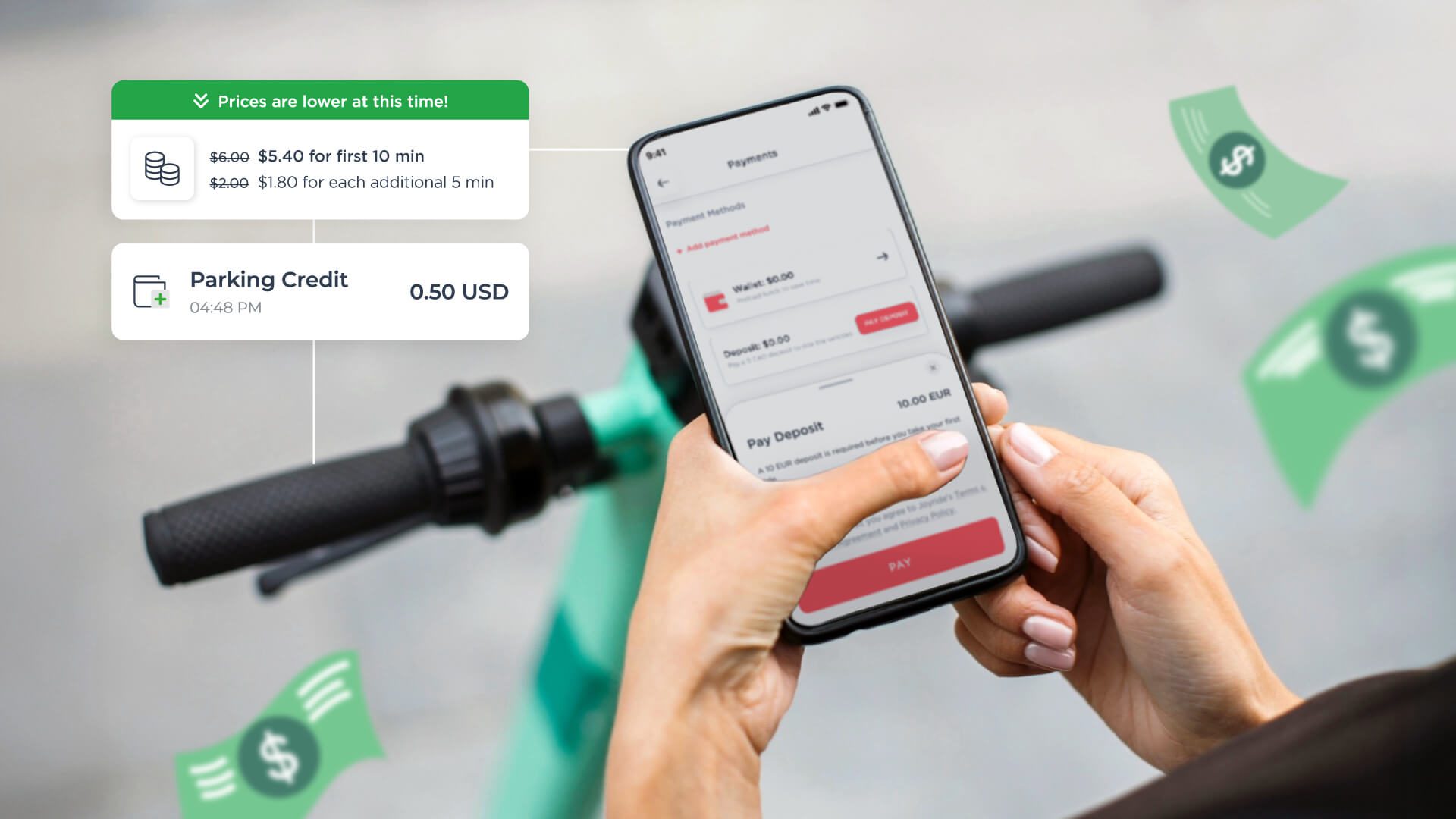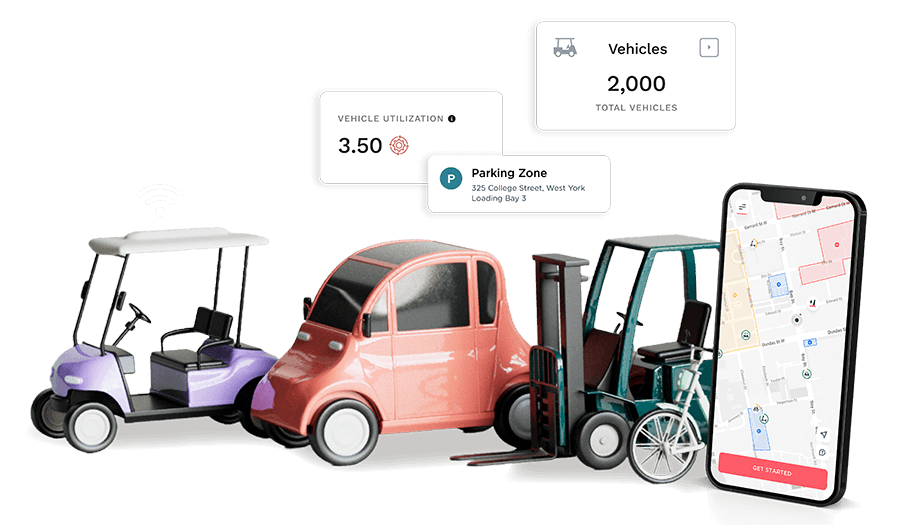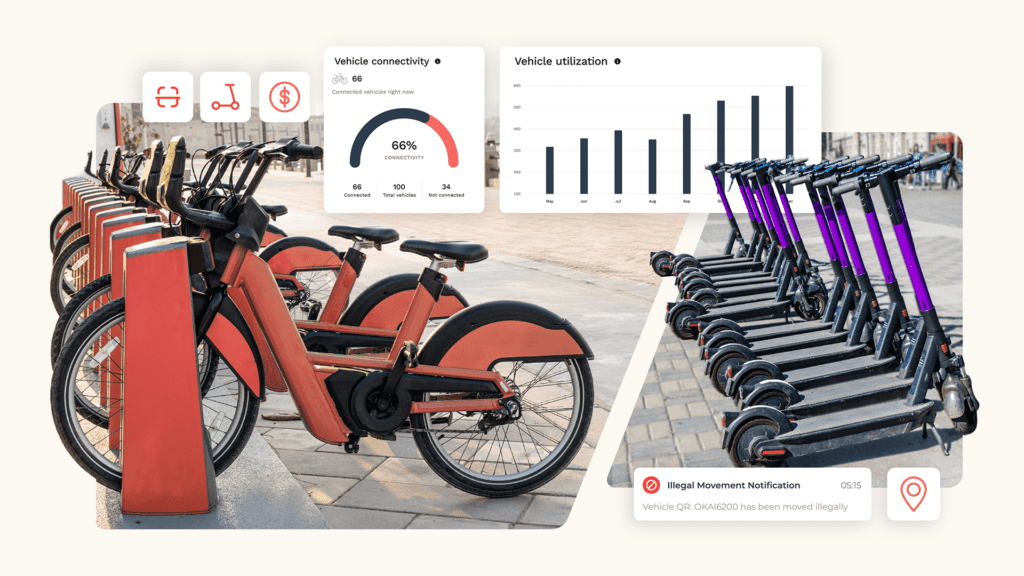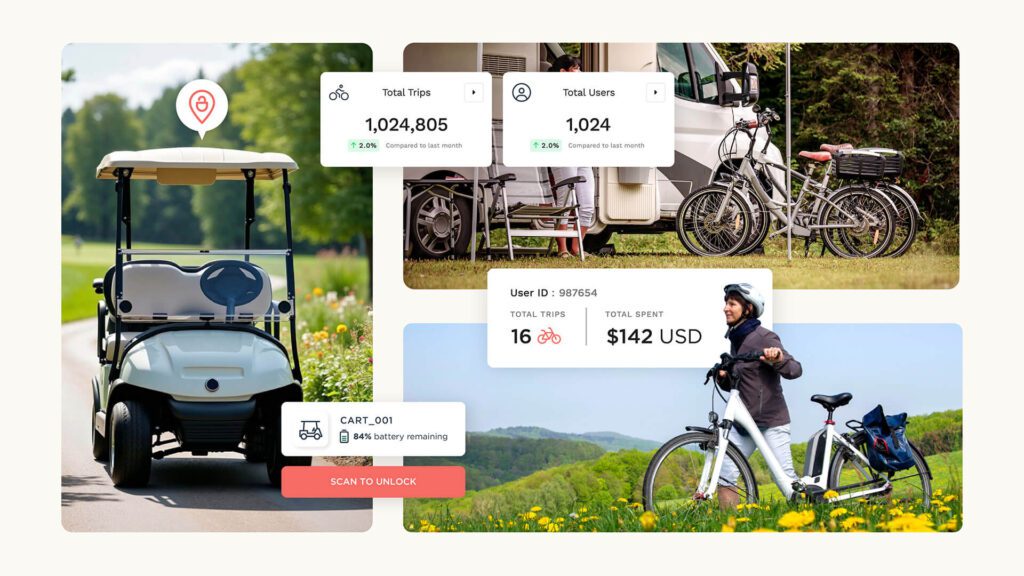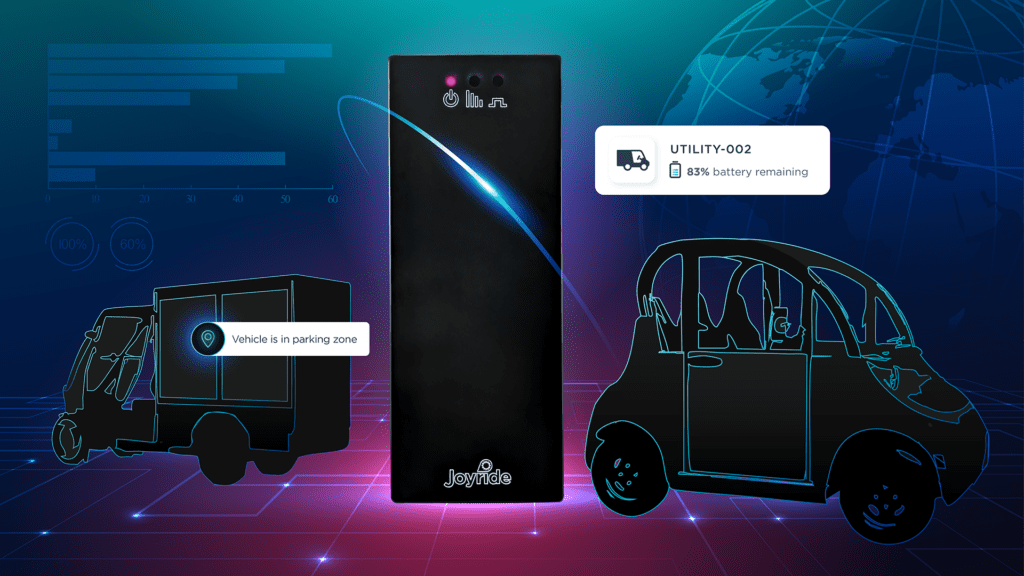In the business of shared mobility, vehicles aren’t the only things moving—pricing, usage trends and rider behavior are constantly in motion as well. That’s why Joyride’s latest batch of billing and payment features were created to give shared fleet operators greater control over every trip and transaction.
In this post, we’ll break down what’s new and, more importantly, how to use these updates as tools to make fleet operations smarter and more profitable.
Joyride's new billing and payment features:
1. Custom Trip Fees: Charge with intention
Operating a public scooter or bike fleet looks different in every city. Some municipalities charge permit fees, while others require contributions toward helmet programs, equity initiatives or micromobility parking infrastructure.
Instead of absorbing every cost, ridehailing companies and public fleet operators often choose to pass certain fees on to their customers.
Joyride’s Custom Trip Fee feature creates city-specific charges per ride that reflect your local obligations, values and business model. Every fee is configurable, rider-visible and multilingual-ready.
For each custom fee, operators define:
- Fee Type: Fixed or variable
- Fee Name: With options to add multilingual support
- Fee Label: How the fee appears in-app to riders
- Infotip: An short message to explain the fee (important for transparency)
What’s the difference between fixed and variable fees?
Variable Custom Fees
A variable fee is a percentage of the ride cost—ideal for scaling costs based on usage. You can also set a cap to ensure the fee does not exceed a certain amount.
Example: 5% Convenience Fee with a $2.00 max.
Fixed Custom Fees
A fixed fee is a simple, flat-rate charge per ride. This is often preferred for program costs that do not relate to a rider’s individual usage.
Example: $1 Equity Program Fee to fund discounted passes for low-income riders.
Transparent trip charges maintain trust
Custom fees are visible to riders on their Trip Summary within their rental app and through email receipts. You control the language, so whether it’s “$2 Downtown Core Surcharge” or “This fee funds city-run docking zones,” clear messaging keeps trust high while covering costs.
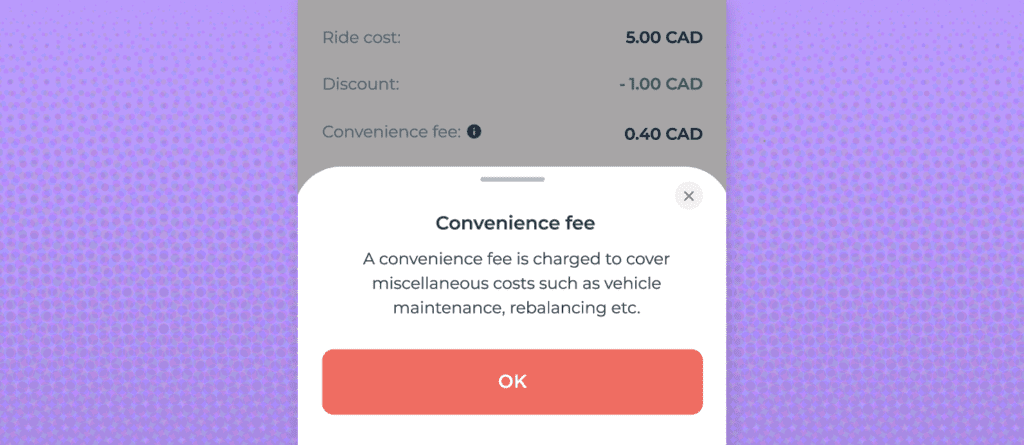
Real-world use cases for fleet operations
Joyride operators are already using Custom Trip Fees in creative and crucial ways:
- City Program Fees: To cover mandated admin costs, helmet initiatives, public transit integrations or educational programs
- Zone-Based Fees: For remote or hard-to-serve neighborhoods, or downtown areas where riders value convenience more than cost
- Green Fees: Use a percentage of funds to offset emissions from ICE vehicles used for rebalancing, or to invest in making your business even more eco-conscious
- Compliance & Safety Fees: Fund signage for scooter and bike parking zones or infrastructure improvements for freefloating fleets
- Equity Fees: Support access programs for low-income communities
- Sanitation Fees: Useful when offering shared helmets or high-touch accessories
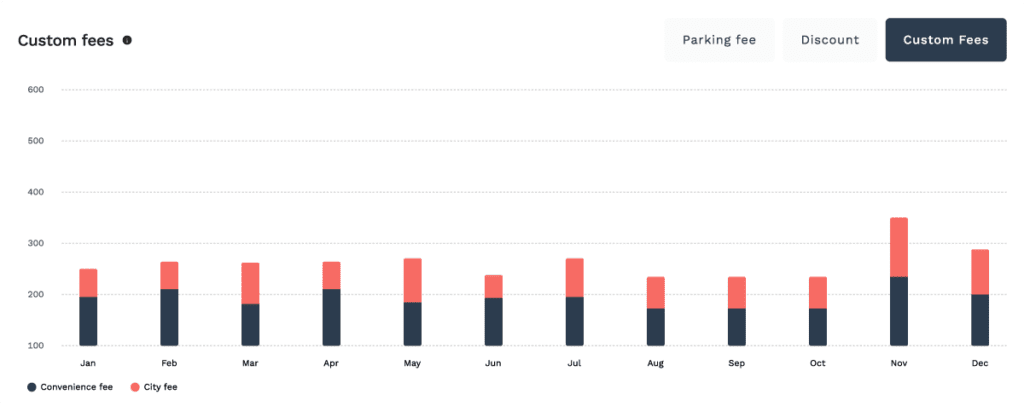
PRO TIP
Run a report comparing trip revenue in areas with and without Custom Fees. You’ll quickly see where you’re leaving money on the table, and how certain fees affect customer retention and trip ratings. This data is easily accessible using Joyride’s advanced payment analytics dashboard.
2. Dynamic Pricing: Balance vehicle supply and demand
Demand for shared vehicles is never static. Factors like seasonality, weather and local events all influence ridership. That said, some patterns are predictable.
For public bikeshare fleets, peak usage typically occurs Tuesday to Thursday during the morning rush (7:00–9:30 AM) and evening commute (4:30–8:00 PM). Shared scooter fleets follow a similar rhythm, with weekend peaks—especially Saturdays and Sundays between 1:00 PM and 5:00 PM—driven by leisure and recreational use.
For most operators, this means focusing on fleet distribution—in other words, getting vehicles to the right place at the right time. Better availability usually leads to more rides. But what if you could boost fleet profitability without adding more vehicles?
Joyride’s Dynamic Pricing feature automatically adjusts ride rates based on peak and off-peak hours. Operators can charge a premium during high-demand periods and offer discounts when ridership slows.
Surge Pricing
Riders in a rush or on a tight schedule may accept slightly higher fees during peak times or in high-demand zones.
Example: 7–10 AM and 5–7 PM tuesday – thursday → +15% pricing per minute
Discount Pricing
Lower prices during slower hours can incentivize ridership when demand is low. Increased utilization–even at a discount–generates more profit than idle vehicles.
Example: Monday and Friday 12–4 PM → -10% discount per minute
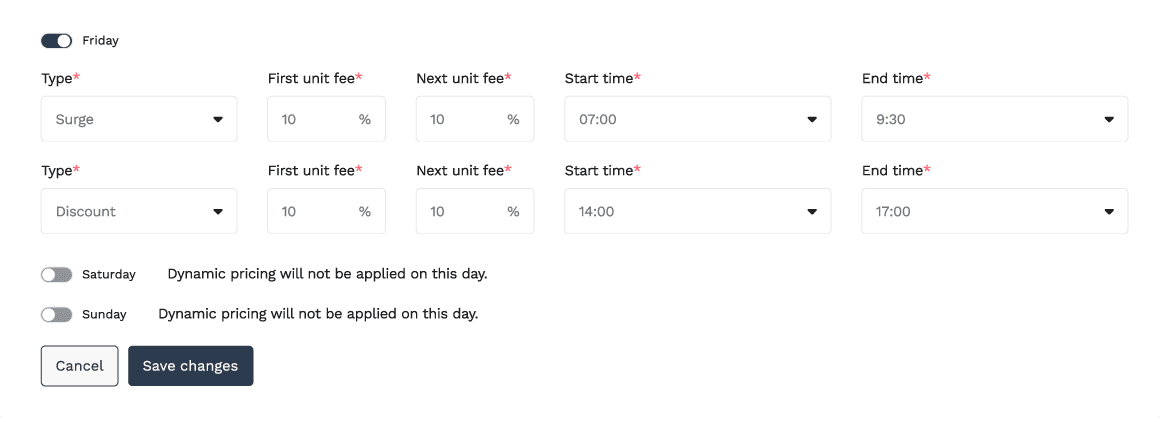
How scooter and bikeshare operators use dynamic pricing
Like Custom Trip Fees, Dynamic Pricing can help offset operational costs—particularly time-intensive tasks like battery swapping in high-traffic areas. Because pricing updates automatically once configured, in-field teams naturally fall into a rhythm of prioritizing vehicle availability in strategic areas.
Clear and fair trip charges
Dynamic Pricing works best when it includes both the carrot and the stick—offering value in the form of discounts, not just penalties through surge fees. Riders need to understand why prices change and see value in what they’re paying for.
That’s why Joyride ensures:
- Pricing transparency before each trip
- In-app notifications when rates are discounted
- Predictable rules for price changes (same times every week)
- Honoring the rate that was displayed when the trip was started (even if pricing changes mid-ride)
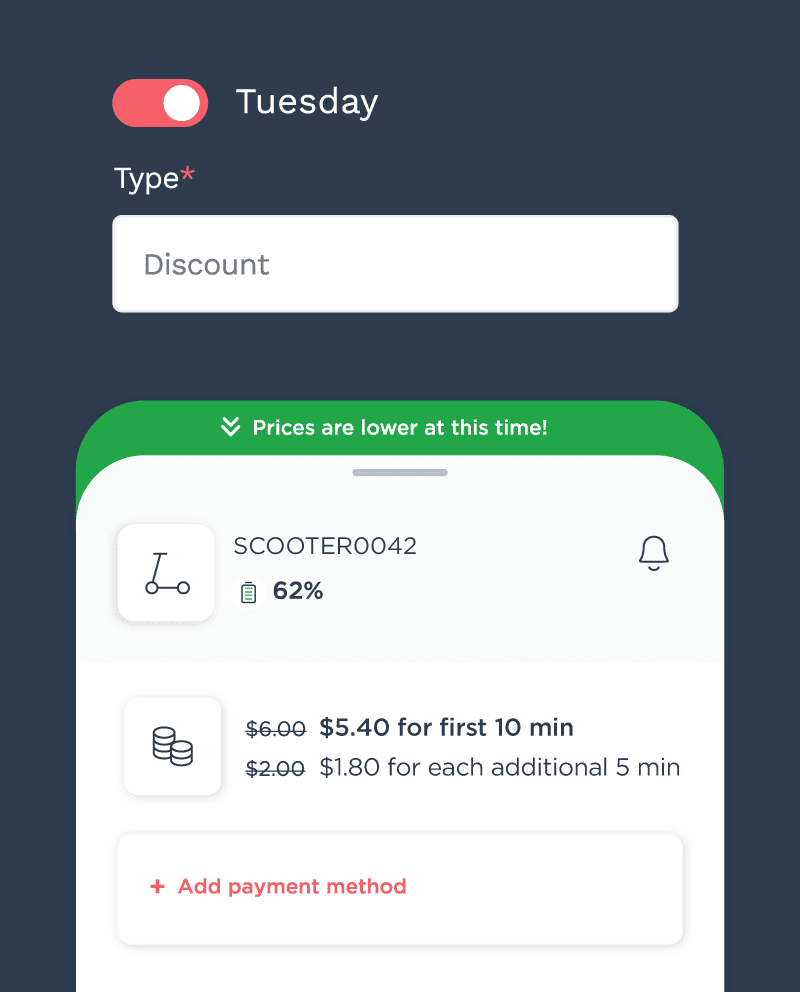
PRO TIP
In highly price-sensitive markets (like student populations or commuter-heavy cities), aggressive surge pricing can reduce trip frequency or even cause churn. Small, strategic increments are best to maintain trust with your users.
3. Parking Incentive: Reward riders for rebalancing your fleet
As any experienced operator will tell you, fleet management is part logistics, part psychology. Sometimes, the fastest way to rebalance your vehicles isn’t a van—it’s a reward.
With Parking Incentives, Operators can reward riders with bonus credits if they end their ride in designated low-supply zones.
How parking relates to fleet profitability
Why is it so important where users park? Well, just like with dynamic pricing, it’s all about supply and demand.
Public fleet operators typically have contracts with cities and businesses that contain service level agreements (SLAs). For example, vehicle minimums define how many scooters or bikes must be available for use at any given time.
Just as important as maintaining vehicle supply in some areas is avoiding overcrowding in others. Maximum vehicle limits are another common SLA aimed at preventing sidewalk clutter.
While these rules makes sense from a safety and usability perspective, operationally it can be quite challenging since fleet managers can’t be everywhere at once.
Parking rules that work for you
Here’s how Joyride’s Parking Incentive feature helps operators make SLA compliance and fleet operations more efficient, while at the same time keeping users active and engaged:
- For each regular parking zone, operators can define a Bonus Parking Threshold.
- If the number of vehicles drops below this threshold, the zone becomes a Bonus Parking Zone.
- Once the vehicle count goes back above the threshold, the parking zone will revert back to normal.
Bonus Parking zones are marked in the Rider App with a star icon so users know to park there. The amount credited to users for parking in a Bonus Parking Zone is calculated as a percentage of the trip cost (before tax), which operators set at the fleet level.
Example: A bonus of 10% on a $5.00 trip would credit the rider $0.50
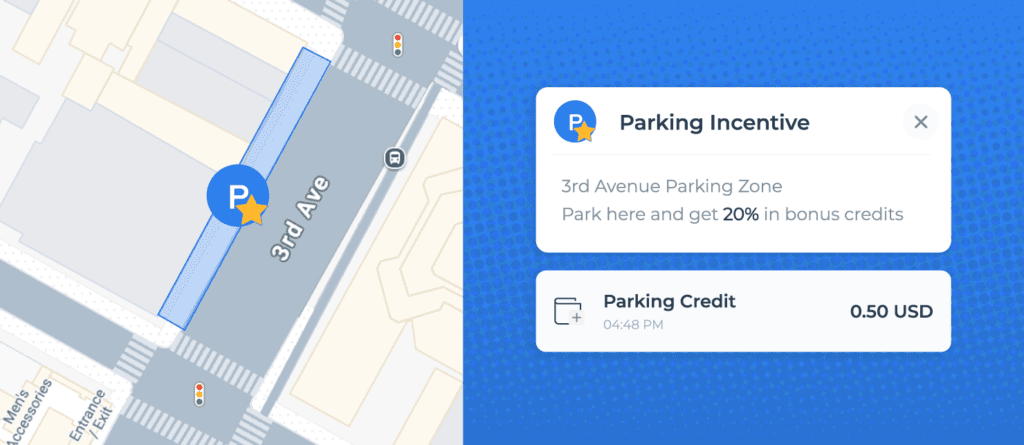
Risk-free for operators, fair play for users
To keep things fair and prevent misuse, bonus credits from the Parking Incentive aren’t applied to the trip they’re earned on. Instead, they’re added to the rider’s wallet as ‘Bonus Money’ and can be used on future trips.
If a trip payment fails—even if the rider settles it later—bonus credits won’t be awarded. This ensures there’s no risk to operators. It’s a simple way to reward users and balance vehicle supply, without any extra logistics.
PRO TIP
Dynamic Pricing and Parking Incentive are a powerful duo to create a loop of loyalty and utility!
Dynamic Pricing influences when users start their trip
Parking Incentive influences where users end their trip
Together, they create a dynamic system that leverages loss aversion (avoiding surge prices) and reward-seeking behavior (earning bonus credits).
Make your shared mobility fleet more profitable with Joyride
Together, with the rest of Joyride’s fleet management software suite, payment features like Custom Fee, Dynamic Pricing and Parking Incentive create a feedback loop of better margins, better behavior and better rider experiences.
Want help setting any of this up? We’re here to support you.
Talk to your Operator Success Specialist for more information, or reach out to our sales team to schedule a demo of our shared mobility software platform.

